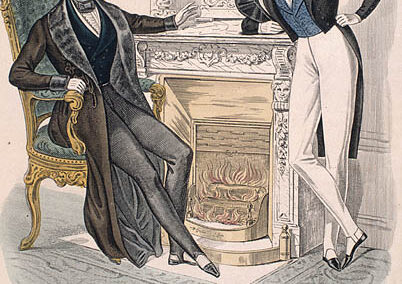As any non-straight woman can tell you, the 2010s and now 2020s have been a smorgasbord of WLW (women-loving women)¹ period pieces. There are easily enough films from the past decade for a film festival strictly of gay women in crinolines. (Those of you interested in exploring some of the highlights of this genre can find a list at the bottom of this post.)
One period piece that really piqued my interest not only as a WLW but as a historian was HBO’s Gentleman Jack (2019–). The series stars Suzanne Jones as Anne Lister, a historical woman who bucked social expectations by living as an out and proud lesbian in nineteenth-century England and whose sexually explicit diary was recognized by UNESCO as a World Heritage document in 2011.

Although Lister faces both lesbophobia and run-of-the-mill misogyny (e.g., the epithet “Gentleman Jack”), her choice to live as a GNC (gender nonconforming)² woman in 1830s Halifax doesn’t cause as much drama as modern viewers might expect. As we watched the first season of the series, I found myself entranced by the material culture and especially Lister’s gender expression: she cuts a remarkable figure in her unapologetically masculine wardrobe of great coats, cravats, and top hats. I began wondering whether Lister’s social class as a landowner might explain the extent to which she was permitted to defy societal expectations.
Lister isn’t the only nineteenth-century GNC lesbian recently on our screens, either. In 2020’s Ammonite, Kate Winslet’s Mary Anning strides the beaches of Dorset in men’s hand-me-down coats and shirts. Whereas Lister flaunts masculine fashion out of sheer love of the game, Anning opts for men’s clothes out of a practical need for mobility and durability while fossil-hunting.

This all got me thinking: just how many women were rocking masculine attire in the nineteenth century? Were they primarily what today we’d call butch lesbians, or did many don men’s clothes for purely practical reasons? How did acceptance of women crossdressing vary by social class? And where did trans men fit into the mix, given that trans identity was entirely marginalized at the time?
Out of this curiosity started up that familiar research itch, and so over the last couple of months, I’ve spent many hours wandering the virtual halls of online archives, examining who these GNC women were and why they chose to live audaciously.
Over the next few posts, I’ll be sharing some of my findings about these groundbreaking women. I encourage you to follow along as I relay some of their fascinating, brave, heartbreaking, and hilarious stories.
More Period WLW Films and Series to Enjoy:
Reaching for the Moon (2013)
Violette (2014)
Bessie (2015)
Carol (2015)
The Girl King (2015)
Mystère à la Tour Eiffel (2015)
The Handmaiden (2016)
A Quiet Passion (2016)
Battle of the Sexes (2017)
Colette (2018)
The Favourite (2018)
Lizzie (2018)
The Miseducation of Cameron Post (2018)
Tell it to the Bees (2018)
Vita and Virginia (2018)
Gentleman Jack (2019–)
Portrait of a Lady on Fire (2019)
Ammonite (2020)
Summerland (2020)
The World to Come (2021)
¹ WLW: woman-loving woman, i.e., a woman who is attracted to other women. This term originated in the black lesbian community but has since been adopted by the wider lesbian and bisexual communities. Although some argue for WLW’s restriction to its original black lesbian context, the lack of an equally concise and accessible alternative has slowed the adoption of a new term.
² GNC: gender nonconforming, i.e., not performing femininity as expected by society
